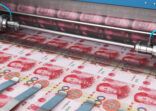One belt, one road is a development strategy that focuses on connectivity and cooperation among countries primarily in Eurasia.
“One belt” refers to the plan to build infrastructure such as railways, roads, and gas pipelines. “One road” refers to the plan to build ports and maritime facilities from the Pacific Ocean to the Baltic Sea.
According to Invesco, the OBOR strategy is likely to boost foreign investment and export growth. It sees the initiative leading to more investment opportunities in industrial A-shares, which account for about 600 of the 2700 listed China A-shares.
The OBOR is expected to focus on building power plants and transmission lines, railways, ports, oil and gas pipelines, water projects, and roads and bridges. As a result, capital goods suppliers such as equipment makers and engineering construction firms will likely be direct beneficiaries, the firm believes.
“In addition to accelerating domestic infrastructure investment, it will benefit Chinese engineering and construction services, who offer cheap labour and low equipment costs.
“There are also revenue opportunities for machinery, while railroad equipment producers will have some relief from the margin compression of recent years.”
The fund house noted that select rail equipment companies have already priced in expectations and valuations may be no longer cheap. Therefore, understanding the fundamentals of these companies is especially important.
In a recent market note, JP Morgan Asset Management also said this “grand plan” should be supportive of China’s capital market in the long run.
The project will help in achieving key objectives such as boosting and upgrading domestic growth and strengthening trade ties while building free trade zones with neighbouring countries and promoting RMB internationalisation, the firm said.
















